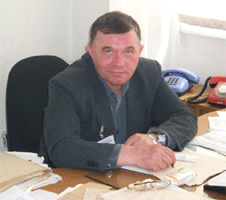LABORATORY OF SYSTEMS STATE PREDICTION AND RELIABILITY

Head of the Laboratory -
Dr.Sc. (Engineering Sciences.), Professor A.N. Rozenbaum
Staff
Total - 11
Researchers - 8
Dr. Sc. - 2
PhD - 6
Main research directions
- Prediction of state and residual recourse of the technical systems under the conditions of insufficient initial data
- Research and investigation into the methods of analysis and prediction of the social systems.
- Elaboration of the methods and algorithms to analyze biological object states changes under the impact of geophysical fields.
- Development of the theoretical bases of individual state-based technical systems condition monitoring.
- Investigation into the new jam-resistant communicational channel.
- General principles to analyze interactions in the system "Biological object - geophysical field" have been elaborated.
- The problems of social processes modeling on the basis of many-valued logic have been formulated.
- The problems of forming information base to predict residual resource of vessel equipment have been considered. The algorithms, ensuring validity of results of state prediction of technical objects with low-information prehistory of behavior during operation, have been supposed.
- The algorithms of minimax processing of initial set of information when solving navigation problems have been developed.
Representative publications
- Rozenbaum A.N., Kislova I.I., Shtanko A.N. The methods of transforming vector optimal criteria into the scalar ones when solving the problem of orientation on sea geophysical fields. Transport in Russia. №3, 2005. pp. 124-125.
- Anatoly N. Rozenbaum and Andrey I. Deshner. Algorithms for Minimax State Prediction of Technical Systems. Int. Journal of Reliability, Quality and Safety Engineering. Vol. 12, №4, August 2005. pp.355363.
- Rozenbaum A.N., Kislova I.I. Choice of individual model of vessel ageing. Transport in Russia. №3, 2005. P. 150.
- Deshner A.I. Spline orientation in minimax filtration to solve the problem of navigation on geophysical fields of World Ocean. Transport in Russia. 2005. Special Issue. P. 136139.